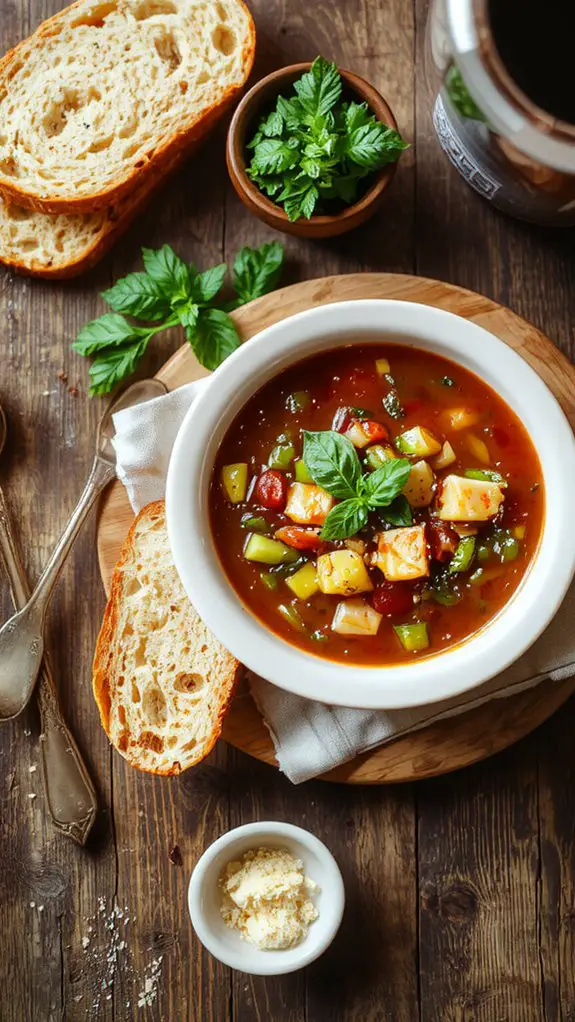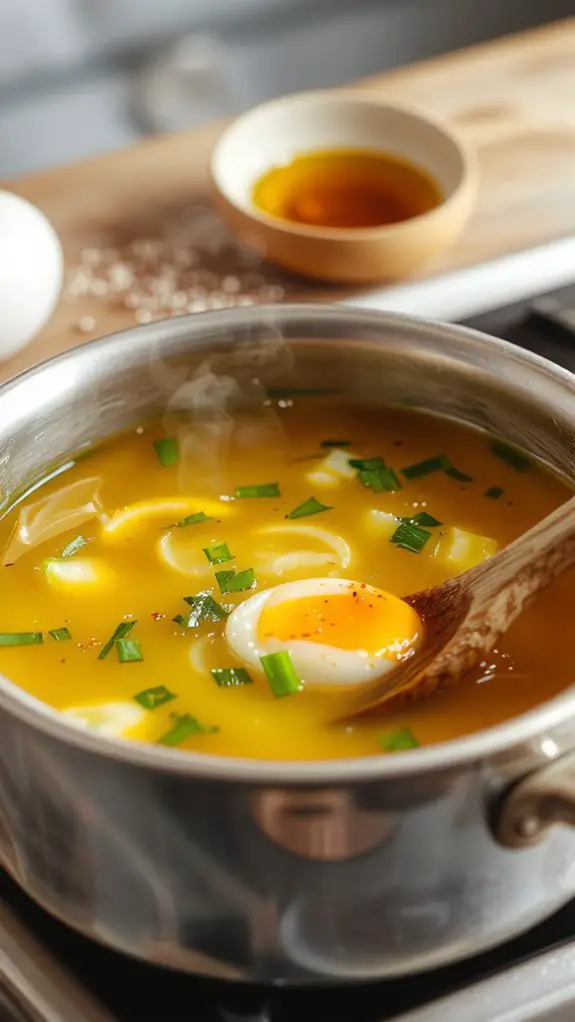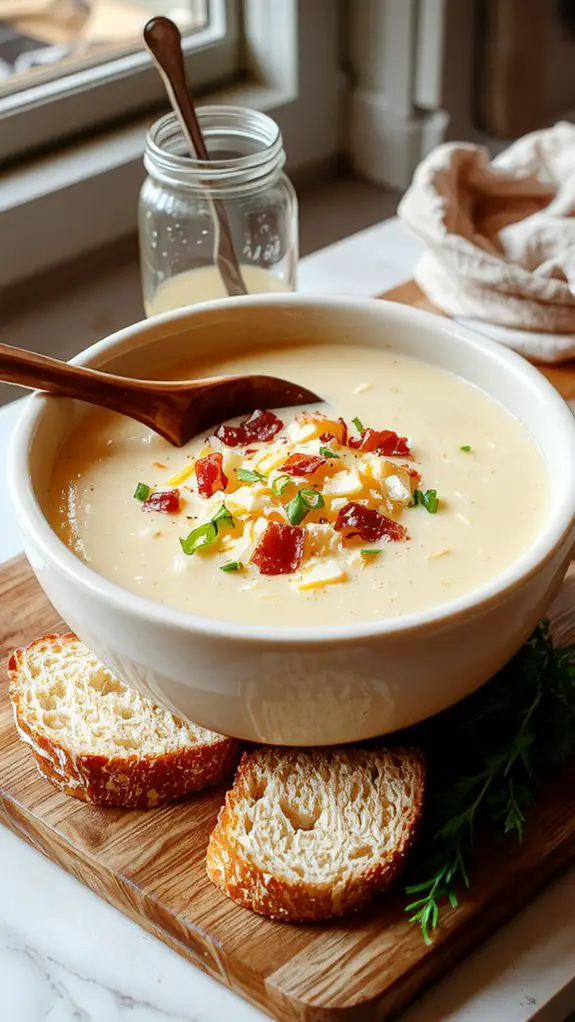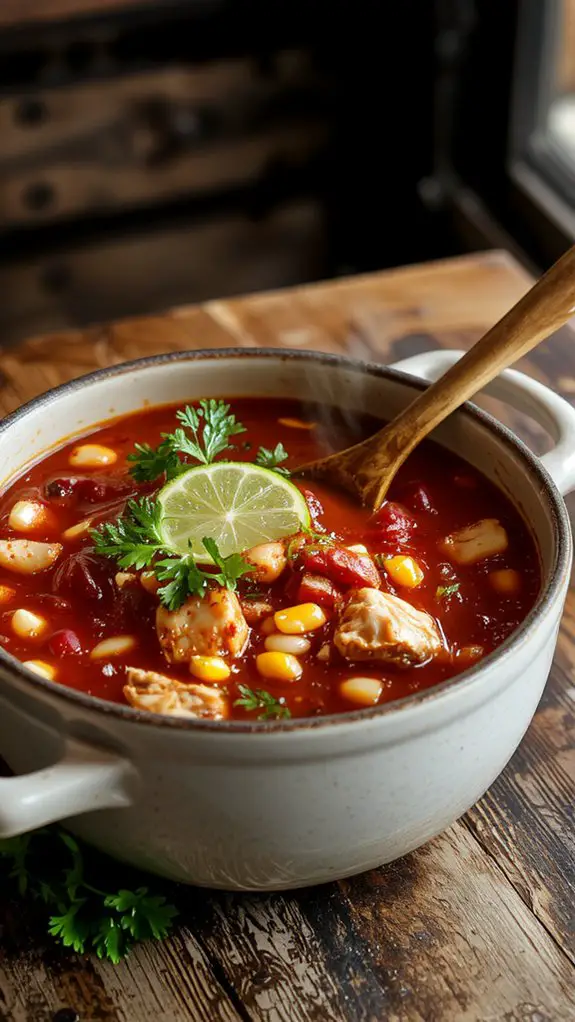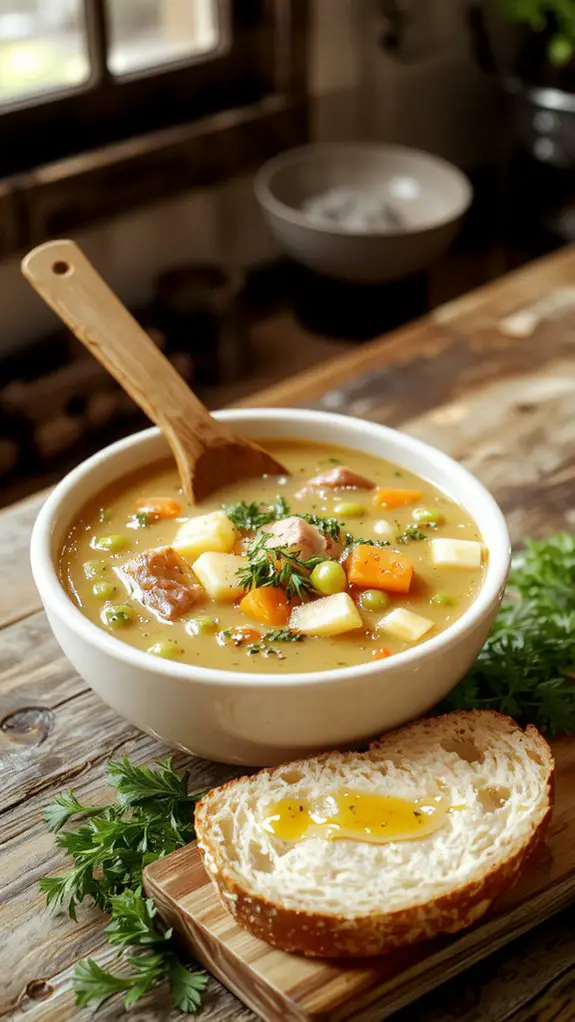Recipe
This minestrone soup is the kind of recipe that will become a staple in your kitchen—trust me, it’s that good. Packed with hearty vegetables, tender pasta, and a rich, savory broth, it’s a meal that feels both nourishing and indulgent.
What sets it apart? A splash of balsamic vinegar and a sprinkle of Parmesan cheese just before serving, which adds a depth of flavor that’ll have everyone asking for seconds. I’ve been making this for years, and it’s always a hit, whether it’s a quick weeknight dinner or a cozy weekend lunch.
The aroma alone, with garlic and herbs simmering away, is enough to make your kitchen smell like an Italian trattoria. Plus, it’s incredibly flexible—toss in whatever veggies you have on hand, and it’ll still come out delicious.
This is comfort food at its finest, and I guarantee it’ll warm you up from the inside out.
Ingredients
Minestrone soup is a hearty, versatile dish that shines with fresh, quality ingredients. While it’s customizable, a few key components make this soup truly exceptional. Start with a base of aromatic vegetables to build depth, and don’t skimp on the olive oil—it’s essential for sautéing and adding richness.
Opt for seasonal vegetables for the best flavor, but frozen or canned work in a pinch. If you’ve got Parmesan rinds, toss them in for an umami boost that’s game-changing. Here’s what you’ll need:
Aromatics & Base
- Olive oil (extra virgin, for richness and flavor)
- Onion (yellow or white, for sweetness)
- Garlic (fresh cloves, minced—don’t use jarred!)
- Celery (adds earthy undertones)
- Carrots (for a touch of natural sweetness)
Tomatoes & Liquids
- Canned diced tomatoes (low-sodium for control over seasoning)
- Vegetable or chicken broth (homemade if possible, for best flavor)
Vegetables
- Zucchini (fresh and firm)
- Green beans (fresh or frozen)
- Kale or spinach (kale for texture, spinach for quicker cooking)
- Potatoes (Yukon Gold or russet, peeled and diced)
Beans & Pasta
- Cannellini beans (canned, rinsed and drained, or cooked from scratch)
- Small pasta (ditalini or elbow macaroni—avoid over-cooking)
Seasonings & Extras
- Bay leaves (a non-negotiable for depth of flavor)
- Dried oregano (or fresh if you have it)
- Fresh basil (added at the end for brightness)
- Parmesan rind (optional, but worth it for added richness)
- Salt and pepper (to taste, added in layers)
Pro Tip: If you’re short on time, pre-chopped mirepoix (onion, celery, carrot mix) works, but freshly chopped ingredients always deliver the best flavor.
Substitutions: Swap spinach for kale, use chickpeas instead of cannellini beans, or try quinoa for a gluten-free alternative to pasta.
Little Win: Finish with a drizzle of olive oil and freshly grated Parmesan just before serving for a restaurant-quality touch.
How to Make the Best Authentic Minestrone Soup Recipe
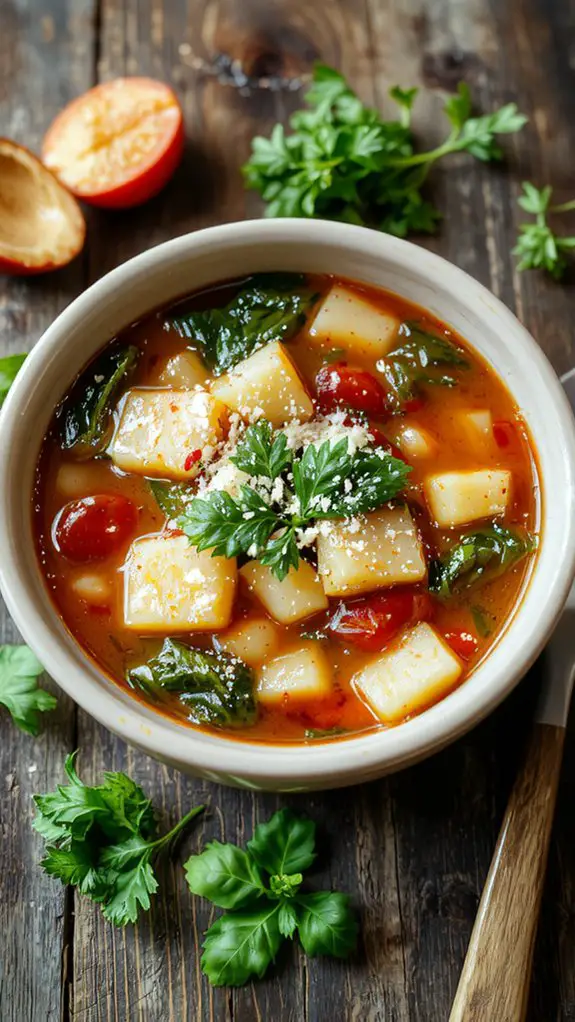
- Heat olive oil in a large pot over medium heat. Using olive oil adds a rich base flavor to the soup. Make sure the pot is large enough to accommodate all the ingredients comfortably.
- Sauté diced onions, carrots, and celery until softened. This step, known as “sweating,” releases the vegetables’ natural sweetness and builds the soup’s flavor foundation. Stir occasionally to prevent burning.
- Add minced garlic and cook for 1 minute. Garlic can burn quickly, so keep an eye on it. Its aroma will let you know when it’s ready.
- Stir in diced tomatoes, vegetable broth, and water. This creates the liquid base of the soup. Use high-quality broth for the best flavor.
- Add bay leaves, dried oregano, and a pinch of red pepper flakes. These herbs and spices infuse the soup with depth and a subtle warmth. Adjust the red pepper flakes to your spice preference.
- Bring the soup to a boil, then reduce to a simmer. Simmering allows the flavors to meld together. Cover the pot partially to prevent too much liquid from evaporating.
- Add diced potatoes and cook until tender. Potatoes thicken the soup naturally and add heartiness. Check for doneness by piercing them with a fork.
- Incorporate chopped zucchini, green beans, and cannellini beans. These add texture and nutrients. Rinse canned beans thoroughly to remove excess sodium.
- Season with salt and pepper to taste. Taste as you go to avoid over-seasoning. Remember, flavors will intensify as the soup simmers.
- Stir in cooked pasta and fresh spinach just before serving. This guarantees the pasta doesn’t get mushy and the spinach retains its vibrant green color.
- Garnish with grated Parmesan and a drizzle of olive oil. These finishing touches add a rich, savory note and a touch of elegance.
- Serve immediately or let it cool and store for later. Like many soups, minestrone tastes even better the next day as the flavors continue to develop.
Nutrition
Per serving, this minestrone soup is packed with essential nutrients.
| Nutrient | Amount Per Serving |
|---|---|
| Calories | 220 kcal |
| Protein | 10 g |
| Carbohydrates | 30 g |
| Dietary Fiber | 6 g |
| Sugars | 5 g |
| Fat | 7 g |
| Saturated Fat | 1 g |
| Cholesterol | 5 mg |
| Sodium | 800 mg |
Chef Tips
When preparing this soup, I always start by sautéing the onions and garlic first—it enhances the flavor base.
I use a mix of fresh and canned tomatoes for depth, and I don’t skimp on salt early to build seasoning layers.
For a richer broth, I add a Parmesan rind while simmering.
Finally, I toss in the pasta separately to avoid it soaking up all the broth.
Frequently Asked Questions
Can I Freeze Minestrone Soup?
Yes, I can freeze minestrone soup. I let it cool completely first, then transfer it to airtight containers or freezer bags, leaving space for expansion. It keeps for up to 3 months, and I thaw it in the fridge before reheating.
How Long Does Minestrone Soup Last in the Fridge?
I can keep minestrone soup in the fridge for about 3 to 4 days if it’s stored in an airtight container. I make sure it cools completely before refrigerating to maintain its freshness and flavor.
Can I Use Vegetable Broth Instead of Chicken Broth?
Yes, I always use vegetable broth instead of chicken broth for minestrone soup—it’s just as flavorful and keeps it vegetarian. I find it blends perfectly with the veggies, beans, and pasta for a hearty dish.
What Can I Substitute for Pasta in Minestrone?
I’d swap pasta with quinoa, rice, or barley—they’ll thicken the soup nicely. If you’re avoiding grains, try diced potatoes or zucchini. Just adjust cooking times since they won’t take as long as pasta.
Is Minestrone Soup Gluten-Free?
Minestrone isn’t always gluten-free because it often has pasta or barley. I’d check the recipe or ask if it’s made with gluten-free pasta or grains like rice or quinoa if you’re avoiding gluten.

